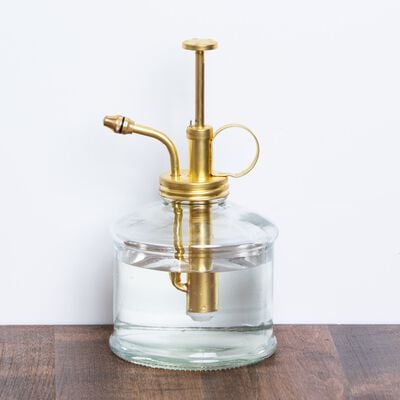Rubber plant—or rubber tree plant (Ficus elastica)— is a low-maintenance, fast-growing houseplant that will make a dramatic statement in your living space. But its large, leathery, dark-green, glossy leaves aren’t rubbery at all. The plant got its name from its milky sap—called latex (sound familiar?)—which was used to make rubber products before a synthetic version was invented.
How To Keep a Rubber Plant Happy
Although rubber plants have their preferences, they’re not stubborn about them. They’d prefer to sit in your sunniest room but won’t complain under fluorescent lighting in your windowless office. They love humidity, but drier air is ok, too. And as far as temperature goes, if you’re comfortable, they’re comfortable.
Give them a drink when their soil is dry, feed them once in a while, and watch them grow up to 10 feet tall. Too big? Not a problem—if you’re short on space, rubber plants can easily be cut down to size.
How Much Light Does a Rubber Plant Need?
Rubber plants prefer bright, indirect light from an east-facing window. Place your plant off to the side or separate it from the window with a sheer curtain to prevent sunburn. They can adjust to lower-light conditions, too—especially if you get them used to it when they’re young.
How Do I Know When To Water My Rubber Plant?
Water your rubber plant only when the soil is dry to the touch—but don’t let it stay dry for too long. Be sure to dump any water that collects in the pot saucer after watering, or the plant’s roots may rot.
How Do I Use Plant Food For My Rubber Plant?
Feed your rubber plant with a water-soluble houseplant fertilizer every 2 weeks during spring and summer. But if the room isn’t bright, cut that down to just once a month. Lay off the juice altogether during fall and winter.
What Is The Ideal Environment For My Rubber Plant?
Rubber plants like humid air and appreciate an occasional misting—especially during winter, when the air is usually drier. But if your home is on the dry side, your plant can learn to deal with it.
Daytime temperatures between 75 and 80 degrees —and 60 to 65 degrees overnight—are ideal for rubber plants, but don’t sweat this too much. As long as you keep the temperature above 55 degrees, they’ll be fine. Just keep them away from drafts.
When you dust your furniture, take a few minutes to wipe your rubber plant’s broad leaves with a soft, damp cloth. Not only do dusted plants look better, but they grow better, too.
How Do I Prune and Maintain My Rubber Plant?
It’s best to prune rubber plants in late spring or early summer. Be sure to wear gloves (or wash your hands immediately afterward) because the plant’s latex sap may irritate your skin.
Stand across the room and imagine the shape and size you’d like the plant to be. Then—using clean, sharp pruners—choose a stem and make a diagonal cut either just above a leaf or above another stem.
You can safely remove up to half of the plant’s branches at one time as long as the remaining ones have plenty of leaves on them.
How To Address Common Rubber Plant Issues
- Brown leaves probably mean your plant is too cold. Move it to a warmer spot.
Leaves that lose their color or drop off the plant usually indicate the plant is either sitting in a cold draft or isn’t getting enough light. Find a better place for it.
Curled-up leaves are a sign you’re not watering right. Only you know if you’ve been overwatering or underwatering, so fess up and make things right.
Slow growth or drooping leaves mean your rubber plant is hungry. Fertilize every two weeks during spring and summer—once a month if it’s growing in low-light conditions.
What To Do If You Still Have Questions
If your rubber plant doesn’t seem to feel at home in your space, we’re here to help! You can chat with a live Greendigs specialist 24/7 by clicking here. You can also shoot us an email at [email protected].
More Tips From Our Team of Growers
Even green thumbs need a helping hand.

Some plants like their home to feel a little more tropical—and who can blame them?

Satisfy a growing appetite by giving your plants a boost of nourishment.

A little dusting can go a long way.

We water, feed, dust, and even house our leafy friends in stylish pots—but what do our plants do for us?
